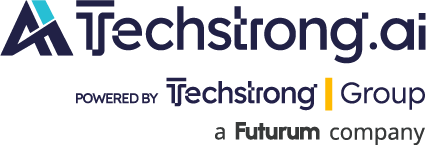
As organizations race to implement artificial intelligence (AI) solutions across their tech stack, they must recognize that success requires more than just investing in the most cutting-edge technology; it demands a robust data environment and strategic preparation.
Technology leaders and developer teams need to build this strong foundation in order to position their organizations for success in AI.
Essential Data Environment Components for Agentic AI Deployment
Whether designed to run processes autonomously or semi-autonomously, agentic workflows bring new considerations if businesses are to confidently leverage agents on production workloads. At the core of these systems are large language models (LLMs) serving as the “brains” of the operation. However, these sophisticated models require carefully structured environments to perform effectively and predictably.
Data consistency is paramount. LLMs need well-designed prompts to interpret incoming data and take appropriate actions, whether executing tool calls or routing information to specialized model nodes. This means ensuring that the data being passed to the agent is in a consistent format that is optimized for the prompt. If the expectation is that different external systems are feeding data into the agent workflow, data will need to be preprocessed.
Organizations should also prioritize event-driven architectures that support streaming data, particularly for complex systems handling multiple inputs and feedback loops. This approach enables better scalability compared to point-to-point integrations, and allows for standardized message formats. Additionally, when agents utilize tools, the events they generate can be seamlessly fed back into the workflow.
Companies need to ensure all agent decisions and actions are in chronological order, enabling both accountability and system optimization. This capability allows teams to replay events, test for consistency and refine underlying prompts when anomalies happen.
Preparing Your Organization for Agentic AI Implementation
Success in agentic AI implementation requires more than technical infrastructure. Organizations need a clear AI strategy that is easy to follow once the technical foundation has been laid.
Before diving into implementation, you must establish a comprehensive AI strategy aligned with business objectives. Set clear success criteria and KPIs to avoid costly “lab experiments” that yield inconsistent results. Do not base AI project decisions on FOMO. For example, if the goal is to reduce spending in terms of headcount by automating low-value/low-risk tasks involved in a core business using agents, make sure you do the proper cost/benefit analysis as the investment in the technology and the specialized talent you will need to hire to build and maintain it may offset any savings from taking the humans out of the process.
Plan and invest in the appropriate data pipeline architecture to support AI projects. Quality data pipelines are non-negotiable. All AI systems are “garbage in, garbage out,” meaning data quality and data governance will still be a concern, but the good news is that you can leverage AI tools to help with that as well.
Invest in both training existing teams on AI fundamentals as well as hiring specialists to work alongside data architecture and engineering teams. This becomes particularly crucial when fine-tuning and training models for specific vertical or use case-specific models where high-quality results are paramount.
How to Measure Success of Agentic AI Implementations
Tracking the success of AI implementations requires a multi-faceted approach. Start by measuring against established business objectives. Are you meeting them? Organizations need clear KPIs that quantify cost savings, time savings and other relevant business outcomes.
For agentic workflows, implement comprehensive audit processes to compare actual agent decisions and actions against expected outcomes. Well-defined processes with proper model training should yield predictable results, with audit logs helping pinpoint any anomalies or areas for improvement. If there is a high error rate, you can pinpoint where in the agent workflow the problem originated.
AI implementation at scale requires significant investment. Track all associated costs, including system changes, training and hiring. Look for optimization opportunities, such as testing less expensive LLMs while maintaining quality.
Perhaps most important is monitoring end user satisfaction. Strong operational metrics mean little if the customer is experiencing difficulties. This holistic view helps ensure that efficiency gains don’t come at the expense of service quality.
Agentic AI Requires Thoughtful Orchestration, Planning – and Humans
Investment in AI agents will increase quickly, but as discussed above, doing so successfully hinges on the careful orchestration of technical infrastructure, strategic planning and human expertise. A robust data environment provides dev teams with an essential foundation. However, equally important are clear business objectives, well-defined KPIs and ongoing measurement of both operational and user-centric metrics. By focusing on these foundational components alongside traditional metrics like cost optimization and user satisfaction, organizations can build reliable and scalable agentic AI systems that deliver measurable business value.

